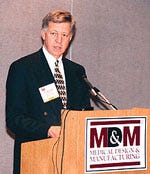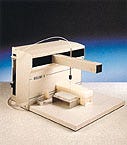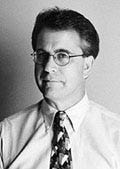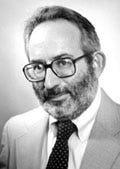January 1, 1998
INDUSTRY NEWS
Medical Device Professionals Convene in Minneapolis
A bright future for the medical device industry foreseen
This past November 4—6, nearly 3000 members of the medical device industry gathered in Minneapolis for the Medical Design & Manufacturing Conference and Exposition, an annual event sponsored by Canon Communications lcc (Santa Monica, CA).
In the keynote address, Medtronic chairman and CEO William George discussed some opportunities and challenges facing the medical device industry. "Medical technology is truly one of the great opportunities of our era," he said. "Despite many obstacles during the 1980s, including the Kessler-led FDA and well-publicized safety issues related to breast implants and heart valves, the device industry is entering an era where the benefits of medical technology are appreciated by the public," George explained.
"Public sentiment about health care is changing," George said, adding that consumers are taking a more active stance in learning about treatment options via the Internet as well as television programs and news magazines.
Conferences covered a range of industry topics, such as the effects of human factors on medical device design. According to Pamela Jamar, a human factors engineer for Medtronic, recent technological developments are forcing designers to ask new questions with respect to device usability.
As the health-care industry continues to evolve, designers must adopt an increasingly user-based approach to device development to ensure user acceptance and market success. Session chair Susan Dray, president of Dray & Associates (Minneapolis), asked device engineers to consider her motto: "If the users can't use it, it doesn't work."
In another session, a panel of experts explored the challenges of microelectromechanical systems (MEMS) in medical devices. MEMS can be produced as millions of components simultaneously, require little power, and are fast and lightweight. The market for MEMS devices is about $2 billion, but is expected to reach $9.74 billion by 2002.
However, the key dilemma facing developers in the MEMS field is whether to produce integrated systems that carry out all functions on a single MEMS, or hybrid systems that make use of components and a modular structure. Kurt Peterson, PhD, president of Cepheid (Santa Clara, CA), stated his belief that the trend is away from individual components and sensors and toward complete systems.
 When they weren't attending conferences, attendees could visit an exposition hall housing nearly 400 suppliers, equipment manufacturers, and service providers. Minnesota-based AutoTran displayed several series of pressure transducers, such as the 561 that features differential or gauge pressures ranging from 0—1 to 0—500 psi. The unit is suitable for use with any harsh media (wet or dry) that is compatible with brass, silicon, glass, and gold. For further information, call AutoTran at 800/735-8998.
When they weren't attending conferences, attendees could visit an exposition hall housing nearly 400 suppliers, equipment manufacturers, and service providers. Minnesota-based AutoTran displayed several series of pressure transducers, such as the 561 that features differential or gauge pressures ranging from 0—1 to 0—500 psi. The unit is suitable for use with any harsh media (wet or dry) that is compatible with brass, silicon, glass, and gold. For further information, call AutoTran at 800/735-8998.
 A sample processor designed for liquid-handling operations and multifaceted diluting/dispensing was demonstrated by Hook & Tucker Instruments (New Addington, Croydon, UK). The Beeline 3 features fully programmable PC-driven operation and a variety of options. For more information, call Hook & Tucker at +44 0689 843345.
A sample processor designed for liquid-handling operations and multifaceted diluting/dispensing was demonstrated by Hook & Tucker Instruments (New Addington, Croydon, UK). The Beeline 3 features fully programmable PC-driven operation and a variety of options. For more information, call Hook & Tucker at +44 0689 843345.
St. Paul Technology (St. Paul, MN) representatives were present to discuss property and liability insurance benefits offered to businesses in the medical device industry. Coverage can be tailored to meet customer needs. For more information, call St. Paul Technology at 612/310-5032.
The regional conference and exposition attracted a large crowd of professionals wishing to stay current about topics relevant to the industry as well as locate the latest in products and services. Manufacturers interested in attending future MD&M events should contact Canon Communication LLC, Trade Show Div., at 310/392-5509.
Study on Medical Plastics Market Published
Growth in engineering resins expected
According to a study by the Business Communications Company, Inc. (Norwalk, CT), the total market for medical plastics reached 100% of total volume and is expected to remain the same through 2001.
Several hundred different resins are employed in the manufacture of medical products. Virtually every plastic resin has at least one grade that is suitable for medical and/or pharmaceutical applications. These resins can be grouped into six major classifications: commodity thermoplastics, styrenics, engineering resins, thermoset resins, elastomers, and a miscellaneous category. The commodity thermoplastic category includes polyethylenes, polypropylenes, and PVC.
The study predicts some growth in the market for engineering resins. The outstanding thermal and mechanical properties of engineering resins are often preferred for certain medical devices. Nylons, polycarbonates, polyacetals, and polysulfones find wide applications in life-supporting and critical devices, such as kidney dialyzers, blood oxygenators, sutures, catheters, and labware. Engineering resins made up 11.9% of the total market volume in 1996 and are expected to grow to 12.4% in 2001. For more information, contact Business Communications Company, Inc. at 203/853-4266.
Precision Wire Components Receives ISO 9002 Certification
Company president credits QA system initiated at inception
Precision Wire Components (Portland, OR), a manufacturer of precision-made wire components supplied exclusively to the medical industry, has been awarded ISO 9002 certification by British Standards Institution Inc.
Company president Charles Trover credits his company's achievement to quality assurance systems written and designed during the company's initial stages of development, as well as to the company's decision to manufacture exclusively for the medical industry. For more information, contact Precision Wire Components at 503/570-9032.
Medical Design Excellence Awards Jury Appointed
Deadline for entries approaching
Organizers of the 1998 Medical Design Excellence Awards have named a jury to select the winners of the annual design and engineering competition. The awards will celebrate technological innovation in medical devices, components, and materials. The deadline for entries is January 26, 1998.
The awards program is sponsored by Canon Communications llc (Santa Monica, CA) and endorsed by the Industrial Designers Society of America (IDSA, Great Falls, VA), which will oversee the judging process. "Canon Communications has attracted an excellent jury for the 1998 Medical Design Excellence Awards," says Robert T. Schwartz, executive director and chief operating officer of IDSA. "With the jury's depth and diversity of expertise and perspective, it can objectively and thoroughly evaluate the entries."
 Kent Ritzel
Kent Ritzel
The jury is headed by Kent Ritzel, a director for Metaphase Design Group (St. Louis) and chair of IDSA's medical section. Other jurors include Leonard Friedman, ScD, head of product development, American Red Cross (Rockville, MD); James Young, president and chief operating officer, General Physiotherapy Inc. (St. Louis); Seth Banks, manager, global design and user interface, GE Medical Systems (Milwaukee); Bronwen Walters, president of Outcomes Analysis Corp. (Dania, FL); and Bill Wood, vice president of R&D, RELA Inc. (Boulder, CO).
 Leonard Friedman
Leonard Friedman
The jury will evaluate entries based on criteria such as benefits to users and patients, safety, cost-effectiveness, technological innovation, and advancement of the state of the art. "This award is an opportunity to recognize innovation that extends the quality of life," says Bill Wood. "As a juror, I'll be looking at some of the most innovative ideas and products."
Juror Bronwen Walters comments that "there are a lot of aspects of the industry that don't get recognized in broad-based design competitions." Specifically, she notes, materials such as medical films, plastics, and adhesives are not traditionally included in such competitions. "The Medical Design Excellence Awards will encourage the people involved in the design of behind-the-scenes products to come forward and show their skill and receive some glory." Finalists will be announced in the May 1998 issue of Medical Product Manufacturing News, and winners will be announced at a gala dinner held during Medical Design & Manufacturing East 98, June 2—4, in New York City.
You May Also Like


